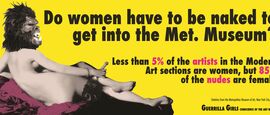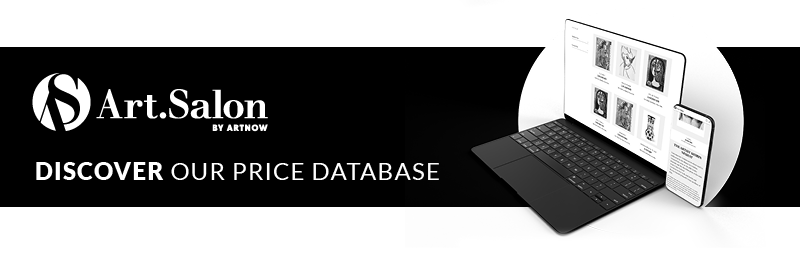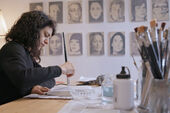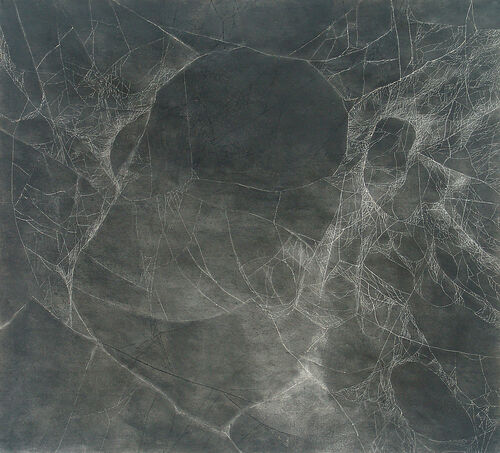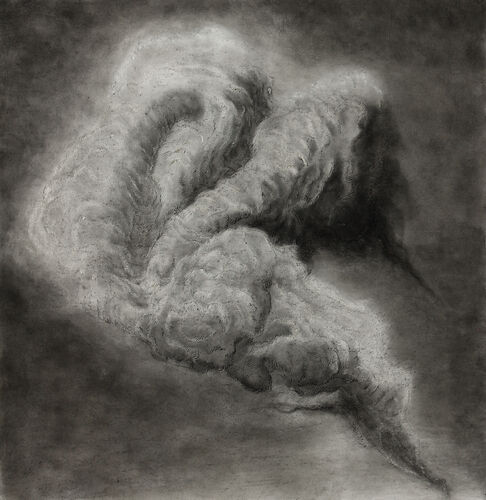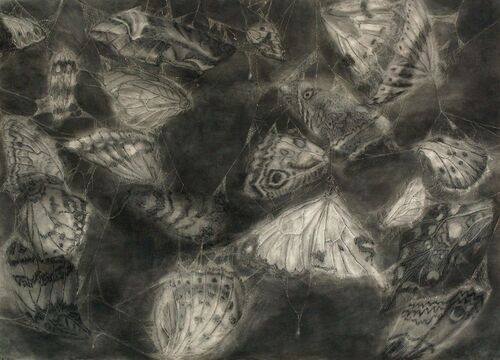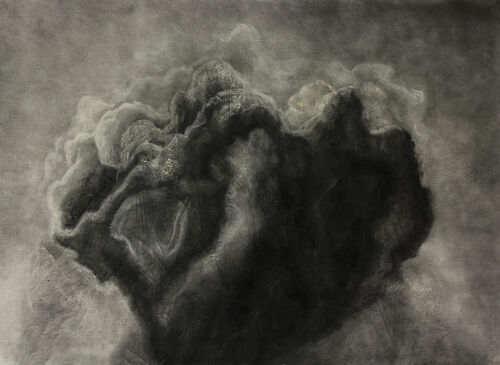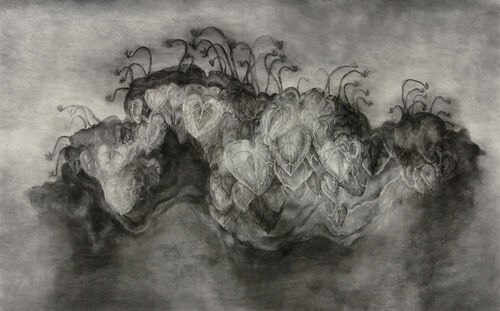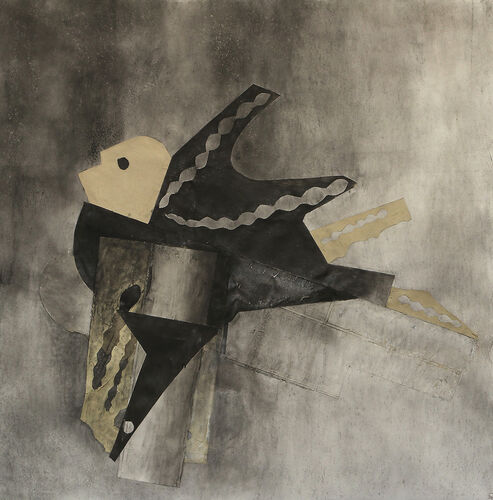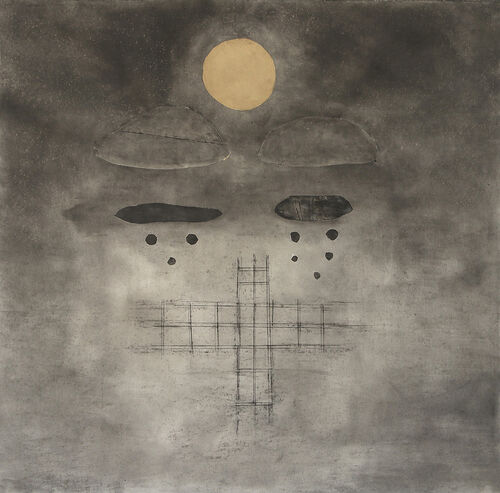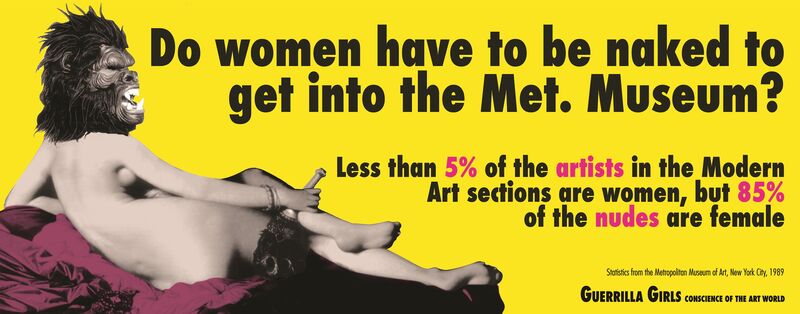
How underrepresented are women in the arts really?
It's hard to deny that the gender pay gap exists - and it doesn't stop at the art industry. Despite the widespread opinion that women are actually relatively common in the creative scene, there is, as is so often the case, an imbalance in favor of men. But is this really only reflected in the fees paid? Figures, data and facts clearly reveal how differently the genders are represented, but what is often missing are insights into the causes and, above all, solutions.

New York City, 1989: A yellow-primed poster with the inscription »Do women have to be naked to get into the Metropolitan Museum?« and the illustration of a naked woman with a gorilla face causes a furor in the museum landscape. The idea comes from the Guerilla Girls, a feminist activist group whose founding is linked to what they see as an obvious lack of female representation in the art world. The Guerilla Girls not only hide their faces on the posters, but also their own behind gorilla masks - and thus remain anonymous to this day. This union was triggered not only by the selection of works in the Metropolitan Museum, where the proportion of women artists was extremely low at the time (less than five percent), but also by the highly regarded exhibition International Survey of Painting and Sculpture in the Museum of Modern Art.
Only 13 female artists made it onto the walls of the Kunsthaus, alongside 156 male artists. Added to this was the arrogant statement of curator Kynaston McShine, who advised all those not represented to reconsider their own careers. It's been 32 years since that scenario - surely a lot has happened in terms of equality, right? The fact that Guerilla Girls' membership has grown to an unimaginable size since then - and with it the associated activism - suggests that the group still sees a need for action today. But what is the actual situation regarding the representation of women in art?
Gender pay gap over 25 percent
To clarify this question, it is helpful to look at the figures - at the beginning of a potential career as an artist, in many cases, there is a course of study: in Germany, the proportion of women in the subject groups of art and art studies was 65.2 percent in 2017, according to the Kulturstatistik 2020 of the statistical offices of the federal and state governments - and the figures were similar in previous years. Internationally, the situation is not much different - even at the »big« internationally renowned universities, a similar distribution can be observed: At the Royal College of Art in London, the proportion of female students was 66 percent in 2019; at the Pratt Institute in New York, it was 63 percent in 2020; and at Goldsmiths at the University of London, it was also 66 percent in 2019. So, by all accounts, women are initially ahead in terms of their art education. But what happens after that? According to reports from the federal and state statistical offices, half of all self-employed people in cultural professions in Germany are female. That sounds like a balanced ratio. However, the January 2020 report of the Künstlersozialkasse (Artists' Social Insurance Fund) of actively insured self-employed artists and publicists revealed a gender pay gap of 26 percent in defiance of this distribution. In 2018, the Institute for Strategy Development (IFSE) presented the situation of Berlin artists, documenting a gender pay gap of 28 percent in the visual arts alone. This pay gap, which is currently somewhere between 26 and 28 percent, is initially only a symptom; the cause cannot be read from it.
It starts with the gender show gap
An essential factor for the success of an artist is visibility. In the exhibition business, analogous to the pay gap, there is therefore also talk of a gender show gap - according to this, female artists get much less of a chance to be counted among the most influential of their time. We asked Barbara Green, Curator with focus on women in the arts and press officer of the Goldrausch Künstlerinnenprojekt (Gold Rush Women Artists Project), which has been helping young female visual artists professionalize for 30 years and offering them support in various ways.
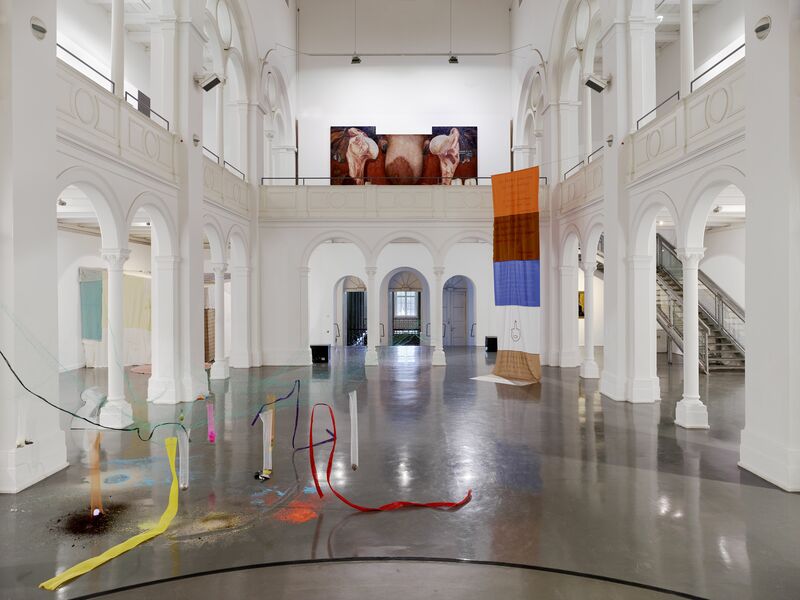
For Green, there is a clear connection between the above-average drop in fees in the art industry and the low exhibition rate of female art: »Women don't have the same opportunities to have their works seen and bought. At Berlin's Gallery Weekend, the scene's biggest-selling event, the gender-show gap reveals a two-tier society. At Gallery Weekend 2018, for example, male artists had a full 40 percent more solo shows than female artists.«
Leading museums in the USA buy only 11 percent female art
This phenomenon is by no means limited to Germany - it is also noticeable in the U.S., which has set the tone in the art market for decades. The New York Times published an article in September 2019 revealing the following result: Between 2008 and 2018, just 11 percent of the art acquired by leading U.S. museums for their permanent collections came from women. In the 2010s, the top 26 museums in the United States directly purchased a total of 260,470 works - including a measly 29,247 works by women artists. According to the report, a problem lies not only in the fact that women are not represented at all in solo and solo exhibitions, but also in the fact that their work is not included in permanent collections. The IFSE report also reveals a significant gender show gap in solo exhibitions at major U.S. museums: between 2007 and 2014, the percentage of women artists in solo exhibitions at the Whitney was 29 percent, at the Guggenheim it was under 25 percent, and at MoMA it was under 20 percent.
This ratio is also in line with the distribution of the most recent art compass of Capital magazine, which in it has annually honored the greatest international artists since 1970: in 2020, there are seven men and three women among the top 10. The first three places are occupied by men, in the same order as in 2018 and 2019: Gerhard Richter, Bruce Nauman, Georg Baselitz. Fourth and fifth place, on the other hand, are occupied by Rosemarie Trockel and Cindy Sherman. According to Capital, auction prices do not play a role in the ranking of the Art Compass - rather, it is determined by a points system based on the criteria of solo exhibitions in one of over 300 renowned international museums such as the MoMA in New York, participation in one of the most important 100 group exhibitions such as documenta, reviews in renowned art magazines, purchases by renowned museums, honors with awards such as the Turner Prize and, in the case of sculptures, outdoor installations.
On the other hand, the weighting among the so-called »stars of tomorrow,« which Capital lists in a separate ranking that takes into account not only the total number of points, but also the increase in points compared to the previous year, points to a slow rethinking of the art world: Here, the distribution is actually fifty-fifty. Half of the places were given to rising artists - with one woman, Otobong Nkanga from Antwerp, at the top. Incidentally, this top position immediately breaks another encrustation in the art market: A Woman of Color as the first-place winner is also of great significance because the »ruling« art market worldwide is not only male-dominated, but also white-dominated - a fact that the Guerilla Girls also pointed out as early as the 1980s.
The dominance of male artists among the current stars can also be measured in hard cash - according to Monopol magazine, there is currently not a single woman among the ten most expensive living artists in the world: Jeff Koons, David Hockney, Gerhard Richter, Cui Ruzhuo, Jasper Johns, Ed Ruscha, Peter Doig, Zheng Fanzhi, Damien Hirst, Maurizio Catellan. According to this, there is both a gender-pay-gap and a gender-show-gap in the art business - what future developments will look like remains to be seen. As far as the sales value of their art is concerned, women are still lagging behind - the growing number of points scored by more and more women artists in the evaluation of the Art Compass gives cause for hope.
Do women simply not work that well?
Where this imbalance comes from is certainly not easy to fathom, let alone answer in one sentence. On the one hand, there are certainly similar reasons for the underrepresentation as in other industries: for example, the well-known assertiveness that is generally positively associated with male characters, while women tend to exercise restraint early on. In addition, it is also clearly a question of the assessment of competence, which basically cannot be the reason - the majority of female graduates speaks for itself. Incidentally, there are hardly any self-taught artists among the currently »most valuable« and most respected artists, so the state of affairs cannot be explained by the myth of innate genius - even if one of them, Georg Baselitz, still claimed in 2013 to an English daily newspaper with his characteristic arrogance that women simply can't paint. Ultimately, the current state of affairs, as in other areas, is based on historical developments and, at times, on the structural discrimination that accompanies them.
According to Green, the background to this state of affairs in Germany is due, among other things, to the fact that there was initially a liberal development after the First World War, but that this was later reversed: the first women were admitted to art colleges in Germany in 1919 - until the 1930s, women ultimately helped to shape art history, were emancipated, and organized themselves. With the rise of National Socialism, attempts were made to turn back the clock - with success. After 1945, a gender-specific oppression of women artists could be observed, which excluded the influence and the creative process of women artists until today.
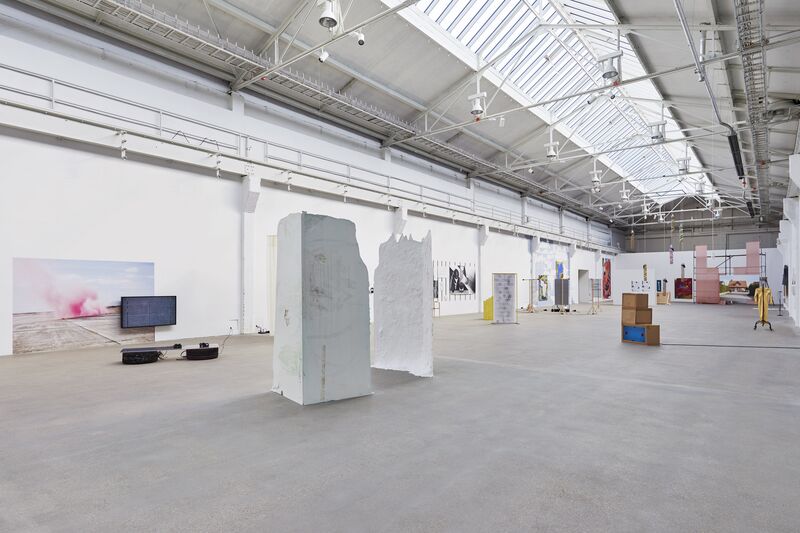
But Nazi ideology can hardly be the cause of the internationally leading role of male art: Globally, the inequality of opportunity stems from traditional patterns of thought and behavior that are supported by so-called »old boys' networks,« as Hannah Kruse, director of the Goldrausch project, put it in concrete terms in an interview with Cornelie Kunkat of the German Cultural Council in 2019. In these networks, »the old star often protects a youthful version of himself,« Kruse says. As for a corresponding women's solidarity By comparison, a December 2017 survey by the Artsy platform on the occasion of the 16th edition of Art Basel in Miami Beach provides a (small) clue: according to the survey, female gallery owners are 28 percent more likely to exhibit female artists than male gallery owners. However, at a total of 33.6 percent, female artists were still significantly underrepresented even in the galleries run by women. Among male colleagues, the proportion of female artists represented was 24.6 percent.
In the art world as well: reconciling family and career
Of central importance in the art world, too, is a tense, if not exactly new, issue: the compatibility of family and career. However, the processes behind this cannot be explained as monocausally as might be expected: regardless of how classically the roles are distributed among the parents, there is more behind the rather conservative social image of the mother than »just« the social implication of the sole responsibility of the woman who gave birth to the child - namely, a mechanism that once again denies them their ability to act and their assertiveness.
Green responds to the question about this issue by saying that some gallery owners and collectors see an artist's market value in jeopardy once she decides to become a mother. »They fear that the artist they helped build will be less productive, that her work will change as a result of motherhood, or that she will even give up the artistic profession altogether.« Regrettably, it is not an isolated case that female artists are terminated from their collaboration after their pregnancy becomes known, even if other reasons are officially put forward. And it is not only pregnant women and mothers who are self-employed in the art industry. A prominent example of this is the case of Nikki Columbus. As a new mother, she too was faced with the prejudice of not being able to devote enough time and verve to her job. She was supposed to fill the position of associate curator of performance at MoMa PS1 in 2018-until museum management learned that she had given birth shortly before and subsequently stripped her of the position. Columbus then sued the museum, sought publicity, and, thanks in part to a petition that garnered more than 29,000 signatures, was able to win not only compensation but also an adjustment to the museum's policies on how it treats pregnant women and parents among its employees.
Do women now work worse than men? Most likely not, even if a Baselitz might be convinced of that. The reasons lie, as so often, much deeper: women artists have to prove themselves more and are not sufficiently visible. Their numerical superiority in art studies shows that, professionally speaking, they should even have an edge. The even distribution among Capital magazine's »Stars of Tomorrow« also attests to their ability - and speaks to a change in perspective that seems to be underway. Given the fact that it sometimes takes a long time to build up an artist's career, it's also not surprising that this process of change is taking place slowly. However, old boys' networks and the lack of access for women to these networks still make it considerably more difficult for female artists to make it to the top - not to mention the negative professional consequences that being a mother can have for them. The men who have »made it« prefer to promote someone who reminds them of themselves, without physical and social »barriers« that might open up a perceived gap.
Is there change to come after all?
At least as far as the pure recognition of female freelance artists is concerned, a change can be observed since the 2010s, despite the persisting gender pay and show gap: For example, while just two women were awarded the Turner Prize until 2005, the number increased rapidly thereafter: Between 2005 and 2019, nine women laureates were added-two of them in 2019 alone, when all four nominees were honored. Moreover, careers in the art business are often determined by individual decision-makers in key positions, so it's also worth taking a look at this lineup in the industry: How, for example, is male and female expertise distributed on the (globally) leading floors of galleries and museums?
In addition to the Art Compass, Capital also presents an overview of the 50 most important international galleries based on the number of the best-known female and male artists represented: Here, it is actually 50 percent of the houses that have been managed or (co-)founded by women. In first place is the Leo Castelli Gallery in New York, which is now run by art critic and wife of the founder Barbara Bertozzi Castelli. Also high up in fourth place is the Berlin location of Sprüth Magers Galerie, founded in Cologne.
Galleries here seem to be more progressive than some other institutions - the artistic direction of documenta, for example, has been filled by women a full two times in 66 years - with Catherine David at documenta X in 1997 and Carolyn Christov-Bakargiev for dOCUMENTA (13) in 2012. The picture is similar among the world's 20 best-visited art museums: There are exactly three women in the position of chairwoman: Barbara Jatta at the Vatican Museum, Frances Morris at the Tate Gallery of Modern Art in London, and Kaywin Feldman at the National Gallery of Art in Washington. Other important art houses such as the Museum of Modern Art in New York, the Louvre in Paris, or the Prado in Madrid are run by men.
Finally closing the gap - but how?
So the question remains as to how the situation can be changed. It's actually simple: all-encompassing support for young female artists in both mental and financial form, regardless of whether a woman has children or not. Actually. A fifty-fifty quota in public museums and art institutions, where there is currently no equal distribution, is a desirable, if difficult to implement, solution to give more visibility to female artists. Quotas are often met with resistance because of fears of a »forced« reality, even when equal qualifications form the basis for fulfilling a balanced ratio. So for the time being, instead of a commandment, the appeal to people in leading positions and to said networks could be an impulse to present and protect female artists more.
Especially women in leading positions - and of course men as well - can make a difference, they could especially contribute to a better networking among women. Barbara Green points to two positive examples here: Maria Balshaw, the director of Tate Britain in London - she changed the collection presentation of contemporary art for the duration of a year in 2018 and showed exclusively works by women. In Germany, Ingrid Pfeiffer, curator of the Schirn Kunsthalle Frankfurt, should be mentioned as a pioneer - she closes a gap with her exhibitions on past art bears by presenting female artists who achieved success during their lifetime - and not only after their death. Narrowing the gender show gap in this way is thus quite possible, even in the short term. Compensating for the current clear underrepresentation of female art will in any case lead to greater visibility and thus to greater recognition in the long term. Projects and funding programs should not only be used appropriately themselves, but should also be brought more and more to the public's attention and passed on to the appropriate people.
The involvement of the state is absolutely necessary for a sustainable change in these circumstances, especially in countries like Germany, where a large part of the renowned museums and galleries are publicly owned. For these reasons, the chairwoman of the Brandenburg Association of Visual Artists Jutta Pelz demanded in her speech on the occasion of the demonstration »Fair share - Visibility for Women Artists« on International Women's Day 2020 from politics and the public, among other things, the promotion of projects to research the art of women by universities and other educational institutions, the obligation of publicly funded museums to include works by women artists in their collections, as well as the targeted promotion of exhibitions to present previously hidden art by women.
More on the subject Controversy
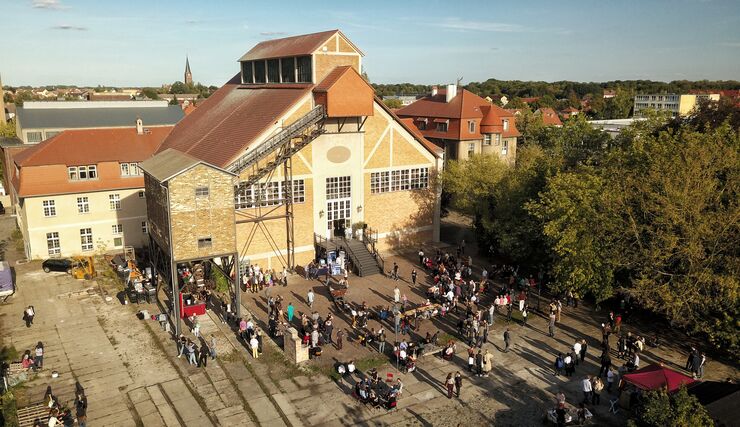
What creative ideas are there for sustainability and climate protection in the art world?
While artists have been addressing the issue of climate change in their work for years, the art industry as such has been quiet for a long time. With the Corona crisis, problems have now come to light whose solutions can have a positive impact on the climate crisis as well.
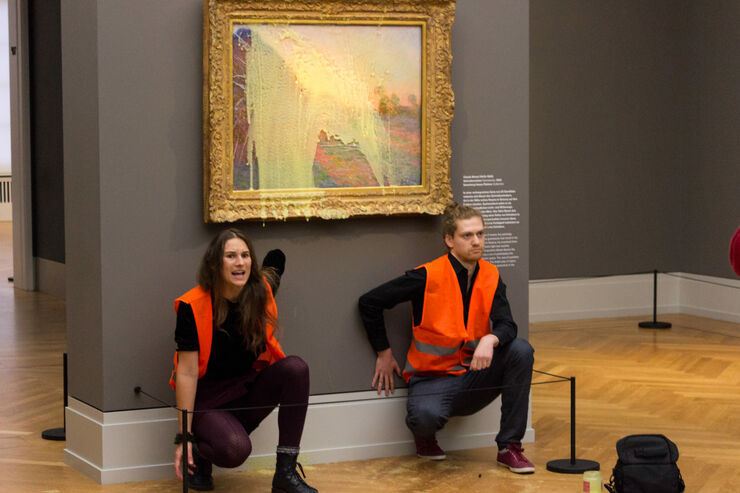
Mashed potatoes on Achilles' heel
One of the first requirements you learn as a child is not to touch anything in a museum because the exhibits are vulnerable and irreplaceable. Liquid mashed potatoes, blood-red tomato soup, and superglue in the exhibit space trigger ventricular fibrillation in culture buffs. Climate protection groups like the Letzte Generation (Last Generation) are now targeting this very weak point.
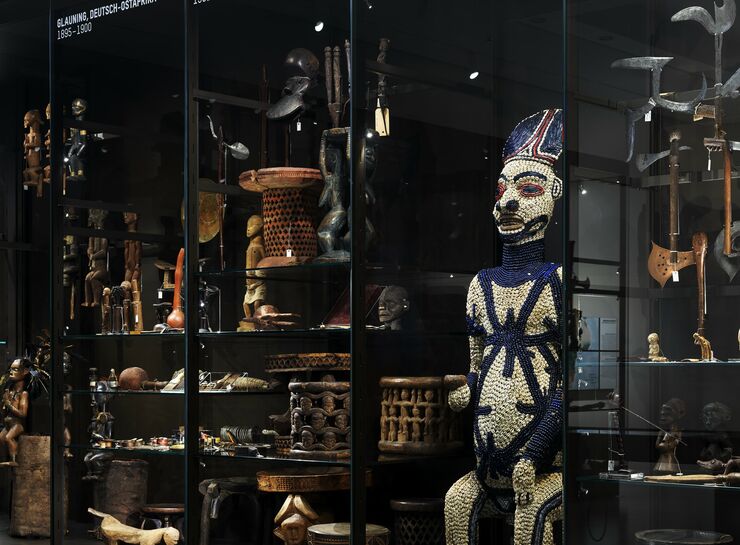
Ongoing discussions about the restitution of cultural artefacts in Germany
Although former colonial powers such as Germany, France or Great Britain have been dealing with the restitution of cultural artefacts for some time, this process is far from complete. The uneven claim of different institutions within Germany to deal with the matter shows how ambivalently the matter is handled: While a central contact point for collection material begins its work, the recently opened Humboldt Forum exhibits the much debated Benin bronzes, in the same year. The entire discussion seems to be guided less by the fact that around 90 per cent of the cultural heritage of the entire African continent is in the possession of European museums, and rather by the specific circumstances of the individual institutions. To avoid this, the idea for the contact point was born two years ago in October - but what has happened since then?
Walter Smerling's new art hall stirs up tempers
The cultural manager Walter Smerling is allowed to use two halls in the empty Tempelhof Airport rent-free and also receives public funds. The exhibition project goes under the name Kunsthalle Berlin – Flughafen Tempelhof – the art scene reacts indignantly.
Dive deeper into the art world
»Women in Art History«: A book project makes a clean sweep
The work of visual artist Sibylle Zeh is multifaceted: her portfolio encompasses a wide spectrum of artistic expression, from paintings and drawings to book objects, photo series and collages to textile objects and installations. The Berlin resident usually concentrates in her work on the representation of the »absent« or the »repressed«.
Staged Realities
For the first time in over 25 years, there is another major exhibition on Jeff Wall in Canada: the Museum of Contemporary Art Toronto is presenting over 50 works by the renowned artist in Jeff Wall Photographs 1984–2023. The exhibition runs until March 22, 2026.




